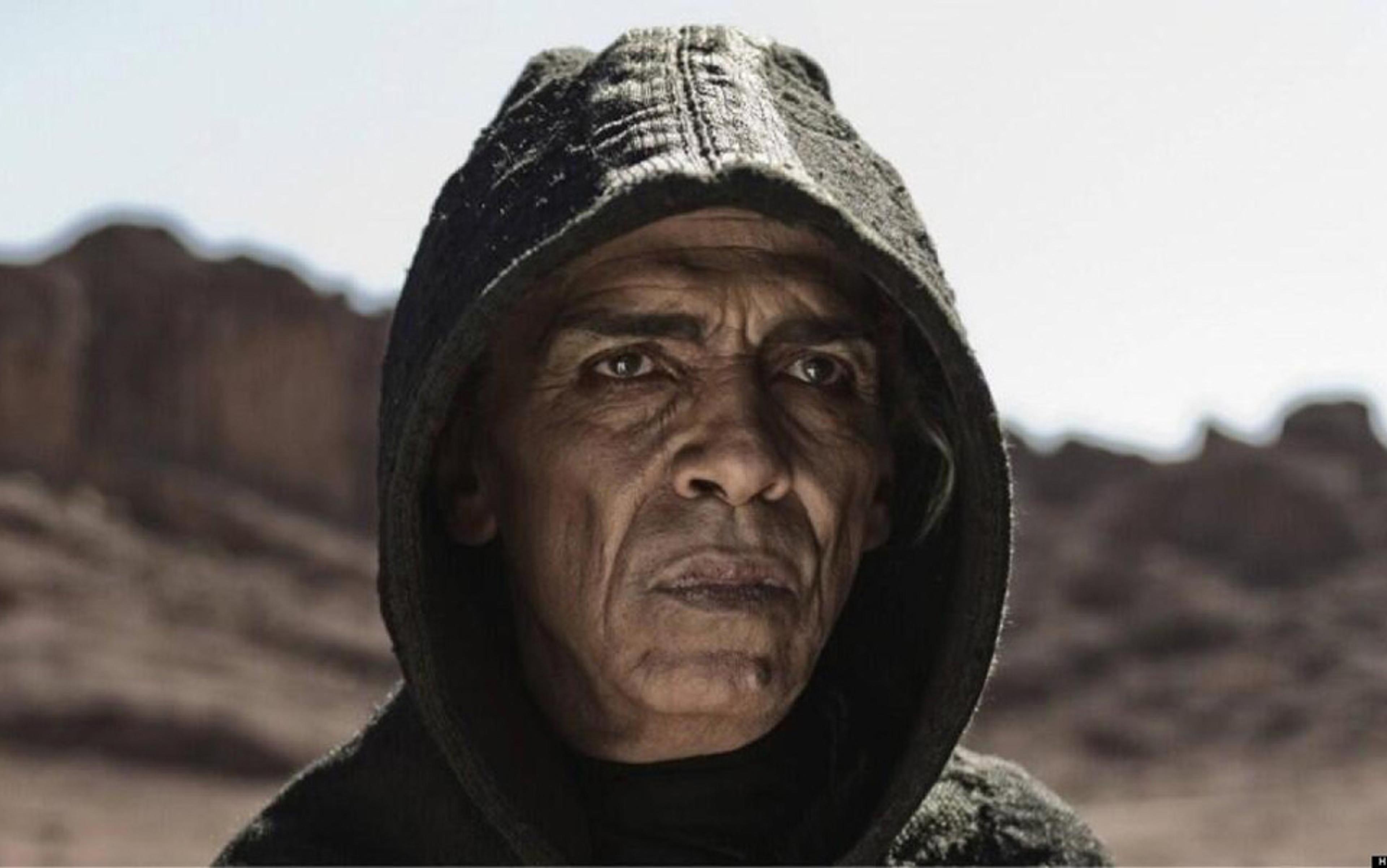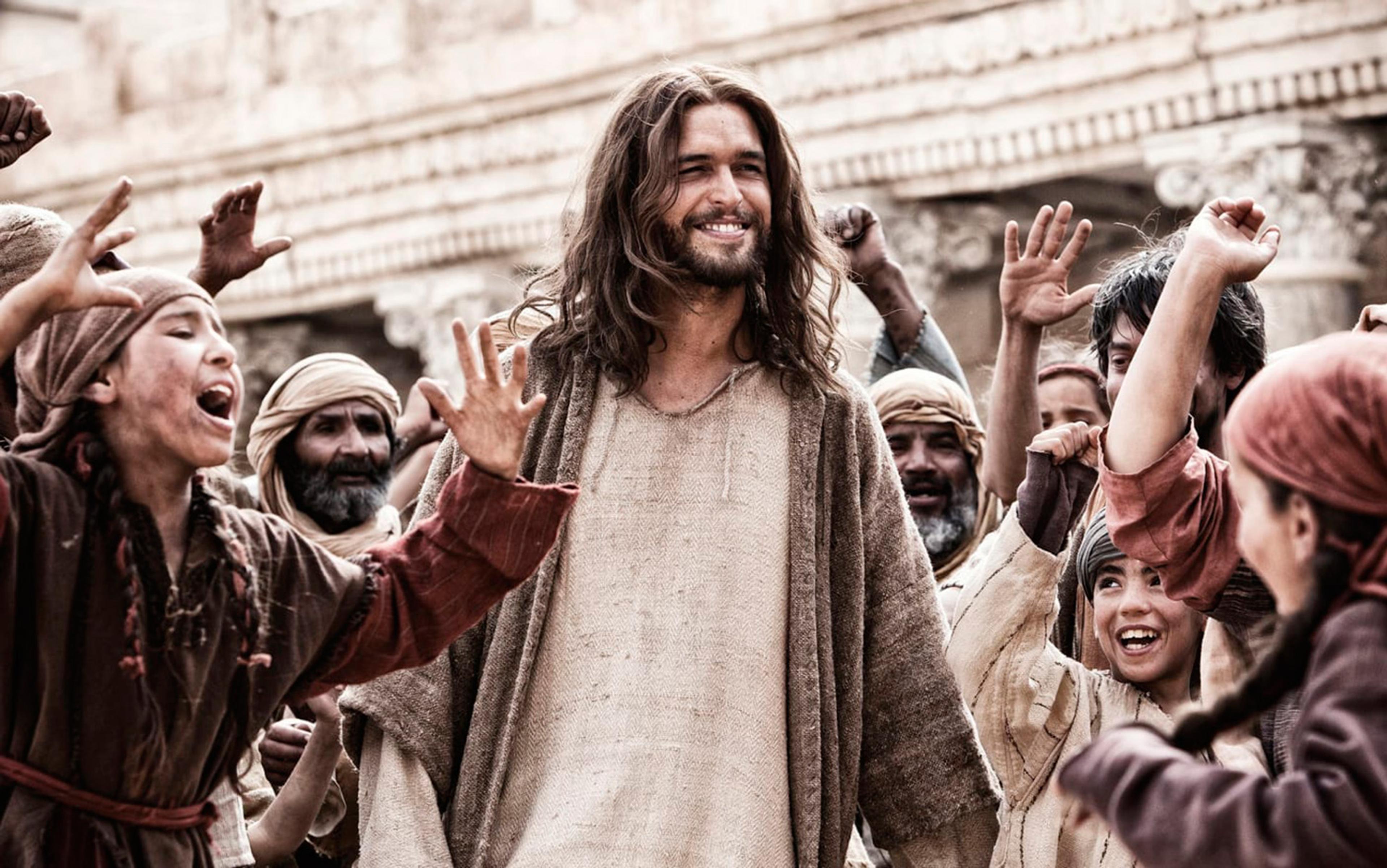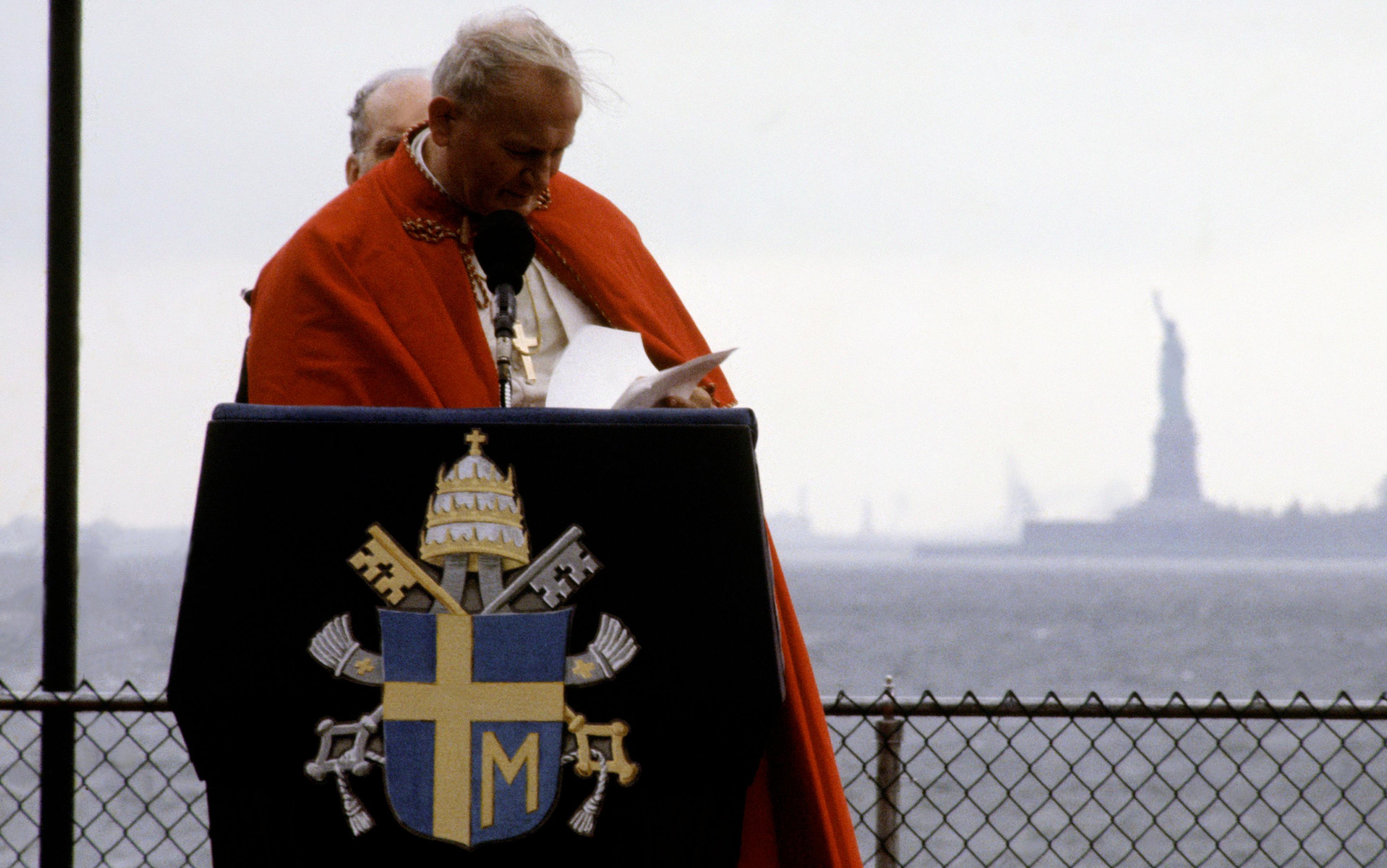Last month, American television audiences were shocked: when Satan showed up in the History Channel’s new mini-series The Bible, he looked strikingly like President Barack Obama. Responses were quick, and they came on all types of media from Twitter and Facebook to CNN and Fox News. Complaints sounded so loudly that the producers of the show were forced to respond, calling it ‘nonsense’ that they purposefully cast the Moroccan actor Mohamen Mehdi Ouazanni as Satan to look like Obama. The controversy hasn’t hurt the ratings for the 10-hour series. With more than 10 million people in the US watching each episode, The Bible has been the biggest cable TV hit of the year.
One of the reasons for its popularity is that Americans care deeply about how biblical figures are represented in the flesh. Whether discussing the darkness (and Obama-ness) of Satan or the ‘sexy whiteness’ of Jesus, the ethnic ‘look’ of the characters has been just as important (if not more so) than what they have said or done on screen. This is not the first time US audiences have fixated on the portrayal of Biblical bodies. In 2004, they flocked to movie theatres to watch Jesus tortured and killed in Mel Gibson’s The Passion of the Christ. In that film, Jesus never spoke English, but his brutalised body was on display front and centre. In previous decades, people asked Martin Luther King Jr what Jesus looked like, and during the 1920s, Americans debated whether it was appropriate to show Jesus in films at all.
In the Bible itself, bodies matter, but not the way they do now. The ancient texts have sick bodies and healed bodies, pierced bodies and resurrected bodies. But for the most part, the Bible is pretty quiet about the colour of those bodies’ skin or the tone of their hair. To understand our contemporary obsession with the actors’ bodies in The Bible mini-series, we need to consider why something that is so silent in the Bible has become so salient in our approaches to it.
Historically, many religious teachers in the US have been keen to downplay the physical characteristics of figures in the Bible, warning that such attention to the merely manifest might divert one from true spirituality. In colonial New England, Puritans differentiated themselves from Catholics by refusing to display Jesus, God, or the Madonna in their churches or on printed materials. Puritans were not absolute in their iconoclasm: they were fine with other representations, and regularly used small figures in educational books. Satan, moreover, was sometimes represented as a horned, winged, and emaciated dark figure (he was, after all, the ‘prince of darkness’). But to see the devil or one of his minions in the flesh was a terrifying experience, and one that could get you executed in the colonies.

Moroccan actor Mohamen Mehdi Ouazanni plays Satan in the History Channel’s The Bible mini-series. Photo courtesy Lightworkers Media / Hearst Productions Inc
Throughout the 19th century, as new technologies allowed for the mass production and distribution of Bible images, some religious teachers worried that they could hinder the mission of the Church. One Presbyterian minister in New York City cautioned his congregants in the 1880s not to trust the imagery of Jesus they saw in picture-book Bibles and on stained-glass windows. ‘It is a remarkable thing in the history of Christ that nowhere have we any clue to His physical identity. The world owns no material portraiture of His physical person. All the pictures of Christ by the great artists are mere fictions.’
Just as it was time for slavery to end, it was also time for women and men of colour to refuse the language and images that associated darkness with evil, and whiteness with good
There was a serious theological reason for that minister’s concern: the lack of biblical detail about Christ’s physical features was crucial to the universal appeal of Christianity: ‘If He were particularised and localised — if, for example, He were made a man with a pale face — then the man of the ebony face would feel that there was a greater distance between Christ and him than between Christ and his white brother.’ Instead, because the Bible refused to describe Jesus in terms of racial features, his gospel could appeal to all. Only in this way could the Church be a place where the ‘Caucasian and Mongolian and African sit together at the Lord’s table, and we all think alike of Jesus, and we all feel that He is alike our brother’.
The theme of a universal Jesus has been a common response from American Christians to the question of what Jesus looked like. In 1957, Martin Luther King Jr’s advice column in Ebony magazine received a letter that asked: ‘Why did God make Jesus white, when the majority of peoples in the world are non-white?’ King answered with the essence of his political and religious philosophy. He denied that the colour of one’s skin determined the content of one’s character, and for King there was no better example than Christ. ‘The colour of Jesus’ skin is of little or no consequence,’ King reassured his readers, because skin colour ‘is a biological quality which has nothing to do with the intrinsic value of the personality’. Jesus transcended race, and he mattered ‘not in His colour, but in His unique God-consciousness and His willingness to surrender His will to God’s will. He was the son of God, not because of His external biological makeup, but because of His internal spiritual commitment.’
But in a society that separated people based on colour, God’s son wasn’t the only challenge for image-makers: the devil was, too. During the Civil War, one northern African-American, T Morris Chester, had announced that just as it was time for slavery to end, it was also time for women and men of colour to refuse the language and images that associated darkness with evil, and whiteness with good. Nearly a century before Malcolm X gained notoriety for such claims, Chester asked his fellows to wield consumer power to effect change. If, he said, you ‘want a scene from the Bible, and this cloven-footed personage is painted black, say to the vendor, that your conscientious scruples will not permit you to support so gross a misrepresentation, and when the Creator and his angels are presented as white, tell him that you would be guilty of sacrilege, in encouraging the circulation of a libel upon the legions of Heaven’.
By refusing the idea of the dark devil, Chester was going up against centuries of Christian iconography. Throughout medieval Europe, it was entirely regular to describe Satan as dark or black. Witches were known for practising ‘dark arts’, and in early colonial America when British immigrants to the New World accused others of being witches, they too conflated darkness with the demonic. The devil was everywhere in Salem in 1692, and he could take any number of physical forms. He did not always come in blackness or redness: Sarah Bibber saw ‘a little man like a minister with a black coat on and he pinched me by the arm and bid me to go along with him’. But most often he did: one witnessed Satan as a ‘little black bearded man’. Another saw him as ‘a black thing of a considerable bigness’, and yet another beheld the devil in the form of a black dog. The devil came as a Jew and as a Native American as well. In The Wonders of the Invisible World (1693), the Puritan theologian Cotton Mather associated Indians and black people with the devil: he wrote that ‘Swarthy Indians’ were often in the company of ‘Sooty Devils’, and Satan presented himself as ‘a small Black man’.
Because of America’s history and its contemporary demographics, there is almost no way to depict Bible characters without causing alarm
In the 20th and 21st centuries, debates over how to depict biblical figures have grown louder and more contentious. In large part, this is because of the increased importance of visual imagery in US culture. Whether at the movies or on TV, in magazines or on the internet, Americans produce and consume images at a staggering rate. Even in the 1930s, some African-American teenagers who took part in sociological surveys answered the question ‘What colour was Jesus?’ with ‘All the pictures of Him I’ve seen are white.’ That seemed definitive enough. Decades later, when Phillip Wiebe, professor of philosophy at Trinity Western University in Canada, interviewed people for his book Visions of Jesus (1997), a man named Jim Link reported having a visionary experience in which Jesus ‘had a beard and brown shoulder-length hair, and looked like the popular images of Jesus in pictures’.
At times, films have tried to avoid controversy by obscuring biblical characters, as in Ben-Hur (1959) or The Robe (1953). In those cases, we see the back or the arm of Jesus, but never his face. At other times, filmmakers have seemed to beg for controversy, such as the casting of the black actor Carl Anderson in the role of Judas Iscariot in the film Jesus Christ Superstar (1973), released just five years after Martin Luther King Jr’s assassination.
Questions of race and identity have now become inescapable elements of any public presentation of the Bible. Mel Gibson digitally altered The Passion of the Christ (2004) to transform the actor Jim Caviezel’s eyes from blue to brown — in an attempt to make his Jesus character look more Jewish. But even with this change, and a prosthetic nose attached to Caviezel’s face, some critics nonetheless denounced the film for presenting Jesus as a typical white American man, excluding, as those earlier ministers had worried, the ‘man of the ebony face’.
The Bible mini-series is yet another example of how Americans have portrayed Bible characters visually, debated what those characters did or should look like, and discussed whether those figures should be put into flesh at all. The debates haven’t simply been about religion. They have also shown how entangled politics and religion are in America, with questions such as whether President Obama is working on the side of God or the side of the devil. And big money is involved — whether in the form of high ratings and advertising revenue from TV and film aimed at the huge evangelical Christian market, or in the lucrative industries that publish Bibles and tracts depicting, perhaps unwittingly, Jesus and the devil on opposite sides of a racial divide.
Because of America’s history and its contemporary demographics, there is almost no way to depict Bible characters without causing alarm. To call Jesus ‘black’ signals political values that are associated with the radical left. In 2008, President Obama’s pastor Jeremiah Wright almost cost him the Democratic nomination because of his claims that ‘Jesus was a poor black man’. However, to present Jesus as white in a society where African-Americans, Asian-Americans, and Latino Americans make up increasing numbers of the population is quickly understood as a code for a conservative worldview. Little wonder, then, that some Americans are choosing to describe Jesus as ‘brown’ as a way to avoid the white-black binary. If one attends an anti-conservative rally in the US, for instance, one is likely to find a poster that reads: ‘Obama is not a brown-skinned, anti-war socialist who gives away free health care. You’re thinking of Jesus.’






